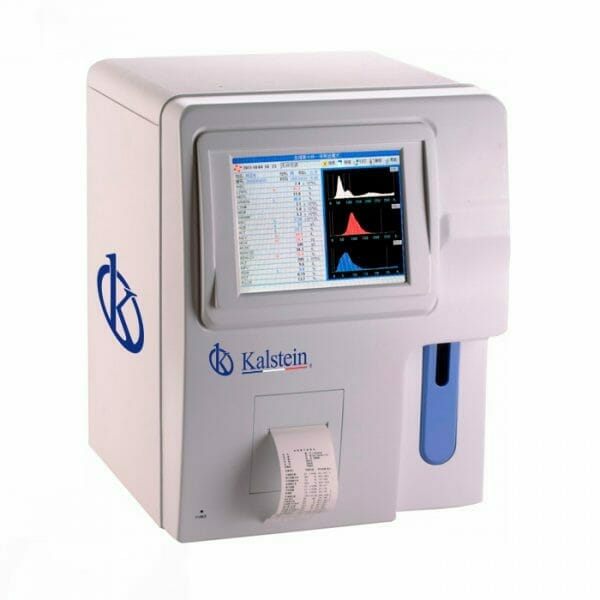A hematology analyzer or hematology analyzer is a device that allows you to perform a complete blood count. In other words, it performs a qualitative and quantitative analysis of red blood cells (erythrocytes), white blood cells (leukocytes), and platelets (thrombocytes).
A hemogram or hematological analysis reflects all the elements or components of the blood, reflecting their number or their proportion in the individual. This is one of the most frequently requested laboratory tests and is part of the basic study required for diagnostic guidance and evaluation of patients, since it offers an overview and can serve as an indicator of anemia, infectious diseases, clotting problems, among others.
In recent decades with technological evolution, laboratories have incorporated high-tech automated equipment that has allowed the delivery of results in less time, with greater precision and accuracy and reducing the number of measurement errors.
Applications and technologies used by hematology analyzers
It is used primarily in hematology for the diagnosis of disorders related to blood constants, such as anemias, leukemias, or thrombosis. We can find them in medical analysis laboratories or in hospital hematology services. Some models are intended for the veterinary sector.
In terms of technology, we can distinguish two main types of analyzers: automatic and semi-automatic. The difference lies in the management and the passage of the samples through the analyzer. You should also keep in mind that there are two main methods of counting and identifying blood cells:
- Electrical impedance. The number and volume of cells is determined from variations in electrical conductivity and voltage, respectively.
- Optical detection. Blood cells deflect the path of emitted light and can be distinguished from each other by size and content.
What is a biochemistry analyzer?
Biochemistry analyzers, also known as clinical chemistry analyzers, are used to determine the metabolites present in biological samples such as blood, urine and other biological fluids. The study of these fluids makes it possible to diagnose many pathologies and diseases.
What are the measurement methods of a biochemistry analyzer?
- Colorimetry: it is the most common method. The sample is mixed with the appropriate reagent to produce a reaction that results in a color. The concentration of the analyte determines the intensity of the color obtained.
- Photometry: a light is projected on the sample with a suitable wavelength, while a photodetector, located on the other side of the sample, measures the amount of absorbed light. It is directly related to the concentration of the analyte in the sample. Principles: absorbance, turbidimetry, and fluorescence.
Electrochemical techniques: through direct potentiometry where ion selective electrodes (ISE) are used for the determination of ions in samples and also indirect potentiometry. Not forgetting that a biochemistry analyzer can offer several measurement principles.
At Kalstein we have state-of-the-art hematology and biochemistry analyzers. That is why we invite you to take a look HERE


